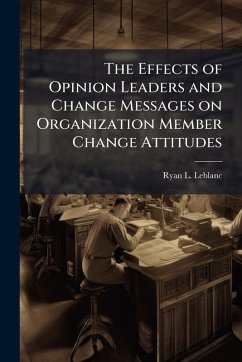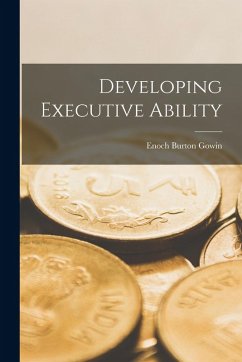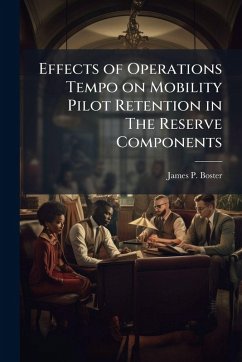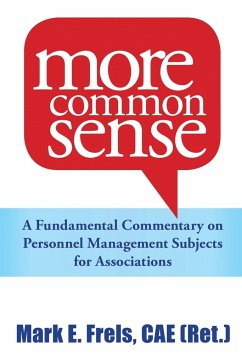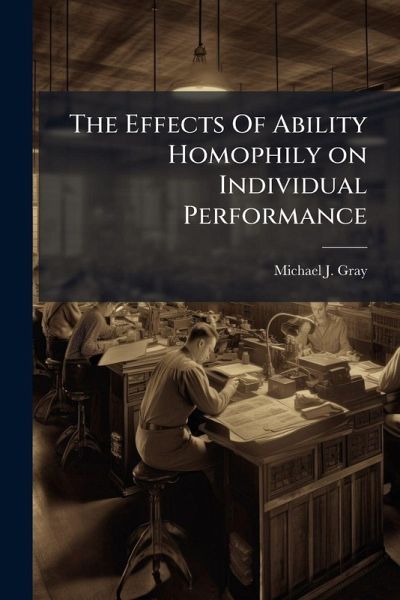
The Effects Of Ability Homophily on Individual Performance
Versandkostenfrei!
Versandfertig in über 4 Wochen
14,99 €
inkl. MwSt.
Weitere Ausgaben:

PAYBACK Punkte
7 °P sammeln!
Homophily is a powerful social force that can cause people to surround themselves with similar others (McPherson, Smith-Lovin, and Cook, 2001). Homophily of ability could lead to grouping of people who have similar performance levels. Groupingby ability is of interest because it has been linked to increased performance inexperiments involving undergraduate (Goethals, 2001) and primary (Lou et al., 1996;Tieso, 2003) school students. However, previous studies have not examined theconsequences of ability grouping when it results from homophily occurring naturallyrather than being imposed by a res...
Homophily is a powerful social force that can cause people to surround themselves with similar others (McPherson, Smith-Lovin, and Cook, 2001). Homophily of ability could lead to grouping of people who have similar performance levels. Groupingby ability is of interest because it has been linked to increased performance inexperiments involving undergraduate (Goethals, 2001) and primary (Lou et al., 1996;Tieso, 2003) school students. However, previous studies have not examined theconsequences of ability grouping when it results from homophily occurring naturallyrather than being imposed by a researcher or teacher. To determine if performancebenefits are associated with ability homophily, a longitudinal study was conducted tomeasure the advice and friendship relationships of 404 adults in a military managementtraining course. Performance was measured by an end of course formative test, instructorevaluations, and peer evaluations. The results confirm that ability homophily in advicerelationships is related to increased performance. Ability homophily among friendshiprelationships was not related to increased performance. This work has been selected by scholars as being culturally important, and is part of the knowledge base of civilization as we know it. This work was reproduced from the original artifact, and remains as true to the original work as possible. Therefore, you will see the original copyright references, library stamps (as most of these works have been housed in our most important libraries around the world), and other notations in the work. This work is in the public domain in the United States of America, and possibly other nations. Within the United States, you may freely copy and distribute this work, as no entity (individual or corporate) has a copyright on the body of the work. As a reproduction of a historical artifact, this work may contain missing or blurred pages, poor pictures, errant marks, etc. Scholars believe, and we concur, that this work is important enough to be preserved, reproduced, and made generally available to the public. We appreciate your support of the preservation process, and thank you for being an important part of keeping this knowledge alive and relevant.




